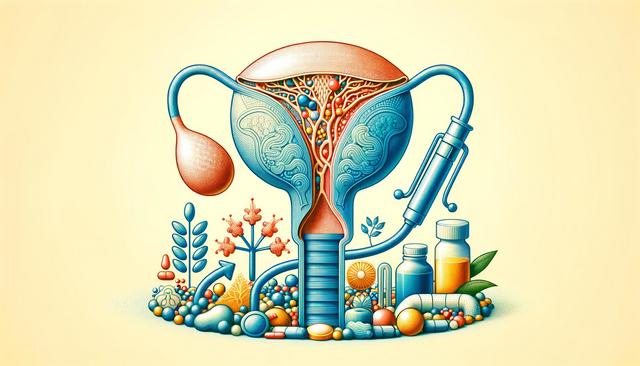Understanding Overactive Bladder and Its Impact
Overactive bladder (OAB) is a condition that causes sudden urges to urinate, often followed by involuntary leakage. It can significantly interfere with daily routines, sleep, and overall well-being. While OAB can affect people of all ages, it becomes more common as individuals grow older. Many people with this condition find themselves restructuring their day around restroom availability, which can lead to frustration, anxiety, and social withdrawal. Recognizing the impact of OAB is the first step toward effective relief. Thankfully, a range of solutions now offers hope for those seeking to regain control and comfort.
The primary symptoms of OAB include:
- Frequent urination (typically more than eight times in 24 hours)
- Sudden, strong urges to urinate
- Urge incontinence (leaking urine after feeling the urge)
- Waking up multiple times at night to urinate (nocturia)
While these symptoms may be disruptive, they are manageable with the right approach. Understanding the underlying causes—such as muscle overactivity in the bladder or nerve signals misfiring—can help determine the most effective treatment strategy.
Lifestyle Adjustments That Make a Difference
Simple lifestyle changes can often bring significant improvement for individuals dealing with OAB. One of the most effective strategies is bladder training, which involves gradually increasing the time between bathroom visits to help the bladder hold urine longer. This technique can improve bladder control over time and reduce the frequency of urges.
Other helpful lifestyle changes include:
- Limiting intake of bladder irritants like caffeine, alcohol, and carbonated beverages
- Maintaining a healthy weight to reduce pressure on the bladder
- Managing fluid intake, especially in the evening
- Practicing pelvic floor exercises (Kegels) to strengthen bladder-supporting muscles
These adjustments, though seemingly minor, can lead to noticeable relief. Consistency and patience are key—results may take a few weeks, but the long-term benefits are often worth the effort.
Medical Treatments and Therapies
When lifestyle changes alone are not enough, medical intervention can provide additional relief. Healthcare providers might recommend medications that relax the bladder muscles to reduce urgency and frequency. These medications are widely used and come in various forms, including oral tablets and patches.
In some cases, more advanced therapies may be considered, such as:
- Botulinum toxin injections into the bladder muscle to reduce contractions
- Nerve stimulation techniques (e.g., sacral neuromodulation or tibial nerve stimulation)
- Surgical options for severe cases unresponsive to other treatments
It’s essential to consult with a healthcare provider to determine the most suitable option. They can assess medical history, evaluate symptom severity, and create a personalized treatment plan.
Natural Remedies and Supportive Practices
For those seeking alternative or complementary approaches, natural remedies may provide additional support. While not substitutes for medical treatment, these practices can enhance overall bladder health and reduce discomfort. Herbal supplements such as pumpkin seed extract and corn silk have been used traditionally to support urinary health, but it’s important to consult a healthcare professional before starting any supplements.
Incorporating mindfulness and stress-reduction techniques can also help. Since anxiety can worsen OAB symptoms, practices like deep breathing, meditation, and yoga may contribute to symptom relief. Additionally, keeping a bladder diary can be useful for tracking patterns and identifying potential triggers, which can guide decisions on dietary or behavioral adjustments.
Support groups and counseling offer emotional relief and shared experiences, reassuring individuals that they are not alone in managing OAB. Being proactive and informed can make a meaningful difference in coping with the condition.
When to Seek Professional Help
Many people with OAB delay seeking help, often due to embarrassment or misunderstanding of the condition. However, early intervention can prevent symptoms from worsening and improve quality of life. If symptoms persist despite self-care efforts, or if they interfere with work, relationships, or sleep, it’s time to consult a doctor.
A medical evaluation typically includes a physical exam, a review of symptoms, and possibly diagnostic tests like urine analysis or bladder scans. This helps rule out other conditions and ensures accurate diagnosis. Timely professional guidance can lead to effective management and a return to daily activities with greater ease.
Don’t hesitate to speak up—healthcare providers are trained to handle these situations with sensitivity and respect. Relief is possible, and taking the first step toward professional support is often the most important one.
Conclusion: Finding Relief and Restoring Confidence
Living with overactive bladder can be challenging, but it’s far from hopeless. With a combination of lifestyle changes, medical treatments, and supportive practices, many individuals find meaningful relief. Whether you’re just beginning to explore solutions or looking to enhance your current management plan, know that help is available. By taking proactive steps and staying informed, it’s possible to regain a sense of control and improve your daily comfort. Remember, you’re not alone—many people are successfully managing OAB, and with the right approach, you can too.




Leave a Reply